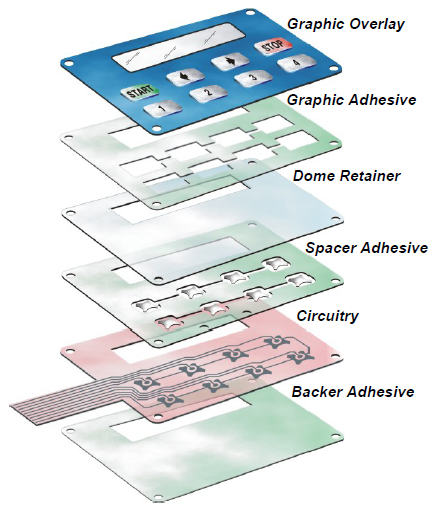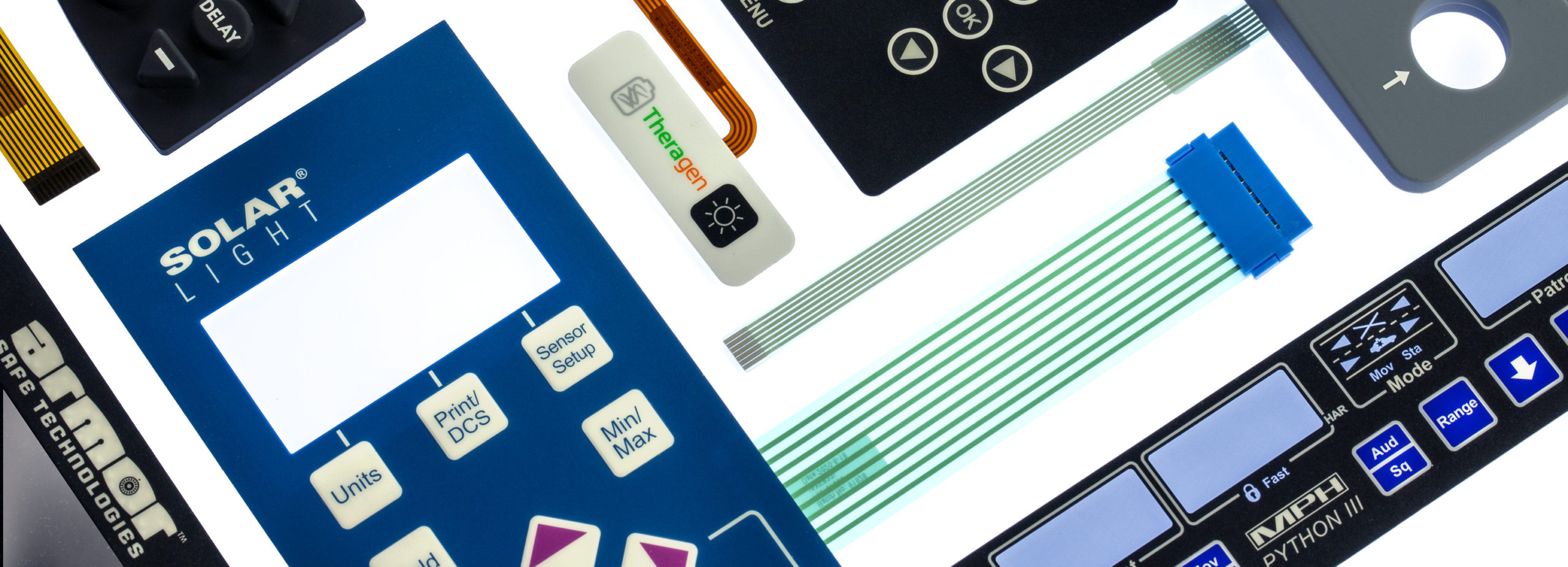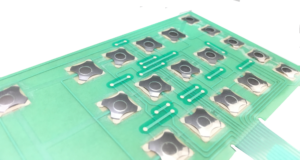The Influence of Membrane Switches on the Development of Wearable Devices
The Influence of Membrane Switches on the Development of Wearable Devices
Blog Article
Membrane Layer Switch Over Modern Technology: The Key to Trustworthy and Economical User Interfaces
Membrane button modern technology has arised as a crucial element in the style of customer interfaces, providing both dependability and cost-effectiveness throughout a diverse range of applications. As we check out the multifaceted benefits of membrane switches, their potential for innovation increases inquiries concerning future applications and developing trends.
Comprehending Membrane Layer Change Modern Technology
Membrane button innovation is a commonly utilized interface solution in numerous digital gadgets, offering a smooth mix of performance and layout. This technology integrates multiple layers of materials, usually containing a graphic overlay, spacer layer, and a circuit layer. The visuals overlay shows the interface aspects, while the spacer layer divides the circuit layer from the overlay till an individual activates a button.
When stress is related to the overlay, the circuit layer finishes the electrical circuit, sending out a signal to the device. This device enables various configurations, consisting of responsive comments and backlighting choices, improving customer interaction. Membrane layer buttons are commonly manufactured making use of resilient products such as polyester or polycarbonate, ensuring long life and resistance to environmental factors like wetness and dirt.
The adaptability of membrane layer switches enables their application in diverse markets, including medical tools, consumer electronic devices, and industrial controls. Their small style permits integration into space-constrained environments, giving an effective user interface without endangering aesthetic charm. Comprehending the ins and outs of membrane layer switch innovation is vital for makers and developers seeking to develop reliable and reliable human-machine interfaces.
Secret Advantages of Membrane Layer Buttons
While various interface options exist, membrane layer changes offer unique advantages that make them a recommended choice in numerous applications. One of the main benefits is their toughness; membrane switches are created to stand up to harsh environmental problems, consisting of moisture, dust, and temperature fluctuations, ensuring durable performance. This strength dramatically lowers the requirement for constant substitutes, therefore reducing total maintenance costs.

Furthermore, membrane layer switches are lightweight and compact, making them suitable for applications where space is limited. Their low-profile layout adds to a streamlined appearance without jeopardizing performance.
Cost-effectiveness is likewise a notable advantage, as the production procedure for membrane layer switches over tends to be less costly compared to typical mechanical buttons. This cost, integrated with their dependability and ease of installation, positions membrane layer switches as a practical solution for a variety of sectors looking for effective and effective individual interfaces.
Applications Throughout Different Industries
Exactly how do membrane layer buttons adapt to the diverse demands of numerous industries? Membrane button modern technology is progressively identified for its adaptability, making it appropriate for a large range of applications throughout numerous fields. In the medical field, membrane layer switches are utilized in diagnostic devices and client surveillance devices, where their sturdiness and ease of cleaning are essential for keeping hygiene requirements. The auto market utilizes these switches in control panels and control board, providing a streamlined visual while making certain user-friendly procedure.
In customer electronics, membrane layer buttons provide a small solution for remotes and home appliances, boosting customer experience through user-friendly style. Furthermore, the commercial market leverages membrane buttons for machinery control board, taking advantage these details of their resistance to rough atmospheres, such as moisture and dust.
Military and aerospace applications additionally make use of membrane layer switches for their dependability and capability to withstand extreme problems, guaranteeing functional performance in vital scenarios. The food and drink market adopts these buttons for automated systems, where cleanliness and ease of procedure are critical (membrane switch). Eventually, membrane layer switches are customized to meet the unique needs of each market, verifying their necessary role in contemporary technology user interfaces
Style and Modification Alternatives

In the realm of membrane button technology, layout and modification options play a crucial duty in enhancing performance and user interaction. These switches can be customized to fulfill certain operational needs and aesthetic preferences, making them flexible components in different applications.
One of the main modification choices is the layout of the button itself, which can be designed to fit unique interface and ergonomic factors to consider. By changing the form, size, and setup of buttons, producers can produce user-friendly designs that help with ease of use. In addition, the unification of different colors and visuals overlays permits branding and enhanced exposure, ensuring that customers can rapidly determine features.
Furthermore, membrane layer buttons can be crafted with numerous tactile comments devices, such as increased buttons or distinct clicks, to enhance the individual experience. Various materials can also be selected for durability and environmental resistance, addressing elements such as moisture, temperature changes, and chemical direct exposure.
Ultimately, the extensive design and modification choices offered in membrane switch modern technology encourage services to produce customized services that not just fulfill functional requirements yet likewise align with their branding and operational needs.

Future Fads in Membrane Buttons
As membrane layer switch modern technology remains to evolve, future trends are increasingly concentrated on boosting user experience and incorporating innovative performances. One considerable pattern is the combination of touch-sensitive and capacitive technologies into standard membrane buttons. This development permits more intuitive interface, supplying responsive responses while maintaining a sleek style.
One more emerging pattern is the use of environmentally friendly materials, driven by the expanding need for lasting production techniques. Makers are seeking to decrease their carbon impact find more information by making use of recyclable substratums and low-impact inks, straightening with worldwide sustainability goals.
In addition, the surge of the Net of Points (IoT) is prompting the unification of wise attributes right into membrane switches. Improved connectivity alternatives will make it possible for gadgets to interact with each other, permitting smooth integration into more comprehensive systems.
Additionally, innovations in printing modern technologies, such as electronic printing, are enabling greater style versatility and personalization. This makes it possible for producers to produce intricate designs and vivid other colors cost-effectively.

Verdict
In final thought, membrane layer switch technology represents an essential technology in customer interface style, providing substantial advantages in resilience, customization, and cost-effectiveness. As improvements proceed to emerge, especially in touch-sensitive user interfaces and sustainable materials, the capacity for membrane layer switches over to enhance customer experience and capability remains promising.
Report this page